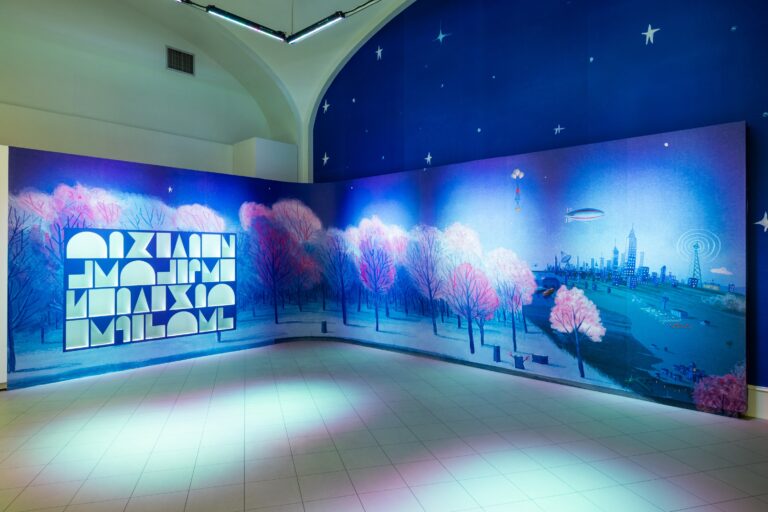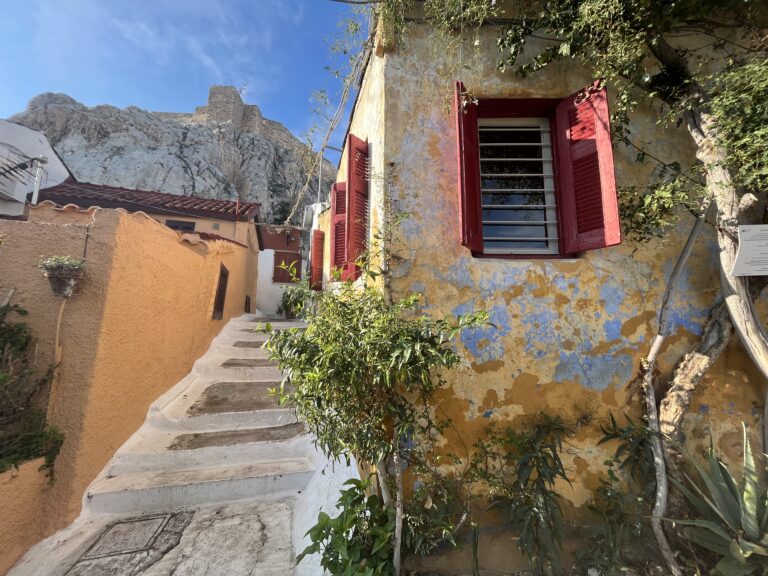“Grand Canals” The Fluid and Mysterious Spirit of Venice
There is something quite unique about Venice, Italy. Not just its vast network of canals but its overall atmosphere. Venice has an inexplicable, near supernatural or otherworldly, quality to it. We can only hope that enough people visit it before it sinks into the ocean. What is the story of Venice though?
Venice originally emerged in the wake of the declining Roman empire. The marshlands its inhabitants took refuge in sheltered its inhabitants from Germanic invaders. Venice became the only city in the world with numerous waterways that people used as roads. Its original builders constructed the mainland city entirely from peat and wooden pilings. They also expanded to the other islands across its lagoon.
Venice- which today has a population of at least 60,000 people (and which welcomes at least 60,000 tourists every day for 9-10 months a year)- once began as an independent, maritime republic. In 697 C.E., Venice elected its first doge (supreme political authority/leader), in 1453, the republic helped defeat the Ottomans in a conjoined effort with other European armies at the Battle of Lepanto, and, in 1797, Napoleon and his army conquered the city. France ruled it for 10 years. Austria ruled it for 50 years, and, in 1866, Venice united with the country of Italy.
Venice contains at least 180 canals (all between 3-8 feet in depth), 454 bridges, 3,000 streets, and 5 leaning towers (across 5 square miles of acreage). Venice is home to the Baroque Basilica di Santa Maria della Salute (“Church of the Virgin Mary of Good Health”), which commemorates the miraculous end to the bubonic plague that struck Venice in the 1630s.
It is where the famous musician Vivaldi was baptized, and where he taught orphan girls to play music and sing. Venice is home to the Santa Maria Gloriosa Dei Frari, a Franciscan church dedicated to the Virgin Mary, which Venetians built between 1340-1336 C.E. (St. Francis returned to Venice from Egypt and Syria in 1220 C.E.). Venetians considered “Ca Grande de Frari” (or “Glorious Mary,” as it was once known) the most religious center in their city. Every August 15, worshipers celebrate the Madonna at this church.
Venice is also home to various other notable sites, including the Piazzo San Marco, the Doges’ Palace, the Campanile, the Arsenal, the Rialto Bridge, and the Grand Canal.
The Piazzo San Marco (St. Mark’s Square) is home to the New and Old Procurators’ Offices, as well as the Doges’ Palace and the Campanile. The Doges’ Palace was constructed from marble at the beginning of the 9th century C.E. It served as the main quarters for Venetian leaders and their constituents (business and residence).
In 976 C.E. it caught aflame. Venetians rebuilt the palace in 1106 and 1340 C.E., and its third construction phase finished up in 1390 C.E. (when a second wing was added to the site). The Doges’ Palace contains numerous Byzantine arches and symbols depicting Neptune and Mars (the gods), as well as images of St. Mark and the Lion of St. Mark.
Four emperors are depicted at the base of its main stairwell. Various Milanese and Florentine masters helped decorate the Doges’ Palace, covering its columns and capitals with depictions of birds, zodiac signs, seasons of the year, and the cycles of human life. In 1297 C.E., workers finished building the palace for the government, justice, bureaucracy, and patrician class, the main triumphal arch, and a courtyard with apartments that housed the doges and their families.
Designer Antonio Rizzio’s famous stairwell contains 24-karat gold and stucco leaves. The palace’s “Representative Room” houses an enormous map of the Venetian empire (with all its ports and coastlines), as well as paintings by Titian (the famous expressionist from the small mountain village of Cadore). His paintings include depictions of St. Christopher (the humble patron saint of travelers, who crosses a river with a helpless child on his back), “faith” represented as a woman with a light and a chalice, and a portrait of French King Henry III. Another famous artist, Carpaccio, decorated an adjacent room with an image of St. Mark.

A large painting by Veronese of a naked person, another of a female in a spider web, and a third of the Battle of Lepanto (in which 530 ships are depicted and St. Justine symbolizes Venice’s unification with Europe against non-Christian armies) are displayed in the Collegio Room. 40 Venetian politicians would meet in the Collegio Room to discuss diplomacy and economics. A zodiac and Roman clock, a 1508 painting of the League of Cambrai, and Tintoretto’s “Marriage of Venice to the Sea” also adorn the Collegio Room.
In the Senate Room, 120 senators (each of whom could only serve for a year and had to be at least 35 years of age) met to discuss foreign politics and forest care. The Venetians valued timber so greatly that anyone who set fire to a forest would face execution.
Politicians at least 40 years of age (who served 6-month terms) discussed churches, houses, palaces, and other Venetian institutions in the Council of Ten Room.
The famous artist Tintoretto and his son painted the largest canvas in the world in the Room of the Assembly of Patricians. Their painting/canvas contains 3 concentric circles, and within those circles, images of Christ, the Virgin Mary, gospels, and angels are depicted. The room, which contains no columns and an all-wooden roof with 22 trusses (like the bottom of a ship), accommodated politicians at least 25 years of age who met to elect officials and decide laws (they all served 2-year terms).
Aligning the Piazzo San Marco near the Doges’ Palace is St. Mark’s Basilica. St. Mark’s, a 330-foot-high, 2-pillared “Cathedral of Venice,” served as a basilica, state church, and private palace for the city’s doges. Its builders constructed it in 1194 C.E. It contains 350 years of decorations, 85,000 square feet of Roman marble and golden, round Byzantine mosaics, and a column to St. Theodore.
Dominating the Venetian skyline, the Campanile, an imposing square-plan tower at least 99 meters high, served as a watchtower for maritime merchants1. The prototype for all other campaniles in the lagoon area, the Campanile at St. Mark’s Square was first built in the 12th century on the site of what was probably another watchtower, was rebuilt in its current form in the 16th century1.
A belfry was added, as well as a spire faced in copper that doubled as a lighthouse for shipping1. A rotating platform with a statue of the Archangel Gabriel (which functioned as a weathercock) topped the spire1. Of the five original bells that Campanile builders constructed, only one remains1. The Campanile destroyed the others (now replaced) when it collapsed in 19021.
The belfry loggia affords a spectacular birds-eye view of the Venetian mainland and lagoon1. The artist Jacopo Sansovino (who also worked on the Doges’ Palace) added a balcony at the base of the Campanile between 1537 and 1549 C.E (which he decorated with marbles and bronzes)1.
During the past, Venetians offered illustrious guests the opportunity to visit the Campanile, but the city’s Lords were cautious about granting the same permission to foreigners, whom they feared might survey the city’s layout and ports for military purposes1. The traditional flight of the Angel celebration that took place every final Thursday before Lent at the Campanile1. An acrobat would descend a tightrope from the belltower’s belfry to a boat in the St. Mark’s Basin or to the Ducal Palace’s loggia (where the Doge and Lords observed the spectacle)1. The famous astronomer Galileo used the Campanile as an observatory to study the skies and demonstrates his use of a telescope to Venetian lords in 1609 C.E.1.

Another significant site at the Piazzo San Marco is the Arsenal (literally “Man’s House of Industry”). Venetians built this state-appointed shipyard in the 12th-century C.E. so that they could facilitate the transportation of people to the “Holy Land” (Jerusalem). Inside the Arsenal, 4,000 assembly line workers built galeras. The galera was a 41.3-meter-long, 8-meter-wide seafaring vessel that 168 rowers could propel (no sails necessary except in cases of extreme windiness). A sculpture of St. Justine (commemorating the 1571 Battle of Lepanto) tops the Arsenal, and four lion sculptures symbolize St. Mark.
The most memorable features of Venice one can discover are of course its canals. The Grand Canal (Italian– Canale Grande) is Venice’s main waterway. It divides the city into two parts and follows a natural channel than traces a reverse-S course from San Marco Basilica to the Santa Chiara Church2.
The Grand Canal is slightly more than 3 kilometers (2 miles) long, between 30-70 meters (100-225 feet) wide, and it has an average depth of 5 meters (17 feet)2. The canal, which connects at various points with a maze of smaller canals, carries the bulk of Venetian transportation (automobiles are forbidden in the city)2.

Tourists frequently opt for leisurely, poled gondola rides, but public-transit water buses (vaporetti) and private water taxis outnumber them2. Police, fire, and emergency medical services traverse the Grand Canal at high speeds, and barges that are responsible for delivering goods traverse the Canal as well2. The city’s main thoroughfare also caters to those who’ve passed to the other side. Funeral barges often travel the Grand Canal to the Isola di San Michele (an island just northeast of the city) and they have been doing so since the early 19th century2.
Palaces, churches, hotels, and other public buildings of all different styles (Romanesque, Gothic, Renaissance) all line the shores of the Great Canal2. One of those structures includes the Ca’ d’Oro, a 15th-century palace that was for Marino Contarini of the eminent Contarini family2. Its ornate façade remains one of the most riveting sights along the shoreline of the Grand Canal2. Also bordering the Grand Canal is the Palazzo Pesaro (which workers completed in 1710, nearly three decades after its chief designer, Baldassare Longhena, passed away), a classical style building that houses Venice’s International Gallery of Modern Art2.
Four main bridges cross the Grand Canal2. The first Accademia Bridge (built mid-19th century), which is located at the canal’s east end, facilitates foot traffic. The Scalzi Bridge was built the same year as the Accademia but at the canal’s west end to provide easier access to the city’s railway station 2. The Constitution Bridge, which Spanish architect Santiago Calatrava designed and unveiled in 2008, is Venice’s newest bridge that spans the Grand Canal (and links the railway station to the bus terminal and parking complex at Rome Square)2.
The Grand Canal’s oldest and easily most famous bridge, though, is the Rialto Bridge. Antonio da Ponte designed the Rialto Bridge alongside his nephew, Antonio Contino, in the 16th century (which they were commissioned to do after winning a citywide competition)2. The Rialto Bridge crosses the canal at roughly its halfway point2. The stone arch bridge spans the narrowest point of the Canal, and citizens consider it the “heart of Venice”2.
The very first bridge at that location was the Ponte della Moneta, a wooden pontoon bridge that Nicolo Barattieri designed in 1178 C.E.2 The Rialto Bridge replaced this original structure, which was rebuilt two times (in 1255 and 1264 C.E.) but collapsed on numerous occasions2. Rialto was the financial center of Venice2. The bridge served as the only fixed structure that crossed the canal until the 1850s (pedestrians used gondola ferries for crossing at other locations)2.
The Rialto Bridge consists of a single stone-arch span that supports a broad rectangular deck2. The broad rectangular deck carries two arcades of shops that front the three roadways2. The bridge is 25 meters (83 feet) in length & 20 meters (66 feet) wide2. The builders drove 6,000 timber piles under each abutment, and they placed the stone bed joints perpendicular to the to the thrust of each arch2.
Venice is one of those places where it’s difficult to separate fact from fiction. Mysterious nighttime revelers pouring through the narrow streets (dressed in flamboyant costumes and fancy “masquerade” masks) is one of those stereotypical images of Venice that may come to mind. Another stereotypical image- a slender gondolier (dressed in a white-and-black striped shirt), relaxedly ferrying a love-struck couple through the Grand Canal. Famous plays like Shakespeare’s Othello and The Merchant of Venice capture this city’s strange and beautiful atmosphere. Then there are films like Death in Venice (1971) and Don’t Look Now (1973).
And, finally, how can we forget all the classic paintings of Italy’s northeastern port city? Some examples include (but are not limited to) Édouard Manet’s The grand canal of Venice (Blue Venice) (1875), Canaletto’s The Grand Canal and the Church of the Salute (1730), Claude Monet’s Gondola in Venice (1908), Thomas Moran’s View of Venice (1888), and Pierre-Auguste Renoir’s The Piazza San Marco (1881).
The one piece of artwork, though, that truly epitomizes the Venetian atmosphere is Claude Monet’s Le Grand Canal (1908). The work is currently on display at the Museum of Fine Arts in Boston. Monet, a French impressionist, painted an image of the Santa Maria della Salute as seen from the Palazzo Barbaro (one of the places the artist stayed at while traveling to Venice in the autumn of 1908). Like his Haystacks or Water Lilies series, Monet painted the Grand Canal at different times of the day and under different lighting conditions.
He produced 37 works depicting Venice during his 3-month stay (October-December) and five more depicting the Grand Canal3. In his painting, Monet uses mooring-poles to counterbalance buildings on the other side of the Canal. While Monet does depict the same panoramic view in sharper and more contrast-laden detail, this version has a faded appearance to it. The aqua-violet canal blends seamlessly into the sky. It is as though we are viewing the city at the break of dawn.
Therein lies the spirit of Venice…. a spirit that embodies the narrative side of the human condition. Not matter…but what matters! Our condition is fickle, fluid, and fleeting. All sorts of canals course their way through us, intersecting and intertwining with others. Think veins, arteries, and capillaries. But also consider our thoughts, our emotions, and our experiences.
These canals pass through all sorts of bright and shadowy realms…realms where our vision and understanding are clear, and realms where darkness and chaos rule. To be Venetian is to embody the entirety of that spectrum…to see the shimmering waterways, glassblowers, gondoliers, and tradesmen in the etching morning light, and to see the mysterious masquerading spirits in the darkness of night!
SOURCES
[1] Basilica San Marco The campanile
[2] Grand Canal | Description, Information, History, Bridges, & Facts | Britannica
[3] “The Grand Canal, Venice by Claude Monet”. Fine Arts Museum of San Francisco. Retrieved 11 March 2015.
Discover more from DG Speaks
Subscribe to get the latest posts sent to your email.





